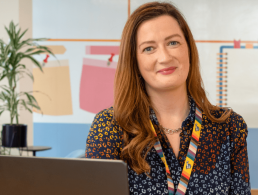Do you know what it’s really like being a working parent?
Working parents have a whole other set of challenges within their lives than others might realise. The double-shifting and additional pressures can lead to both home life and working life becoming very difficult.
When it comes to building an inclusive workplace, giving a real-life insight into what it’s like being a working parent is a good place to start, which is exactly what Dr Maria Quinlan set out to do when she created a photography report called Photovoice with Deloitte that highlighted these experiences.
“I’m a sociologist and I specialise in the use of creative, person-centred methods such as Photovoice which facilitate people in sharing their lived experiences. My main focus is on creating actionable insight regarding issues of equality and inclusion,” she said.
The report she carried out for Deloitte explored the experience of working parents within the company and put a spotlight on the challenges that come when combining a successful career with people’s responsibilities as parents.
“There’s a lot of research which suggests that parents face a difficult double-shift when it comes to their roles as workers and as parents – and that combining both of these roles can be stressful and challenging,” said Quinlan.
While the business case for promoting work-life balance is strong, Quinlan said organisations struggle to break away from the ‘always-on’ culture. “Research in this area has not had a huge impact on workplace culture, so I wanted to use an approach from the social sciences, which I’m really passionate about as I think it’s a very powerful method of driving change.”
For employers that want to improve the lives of employees who are working parents, Quinlan advised asking them directly what they want, what they need and what challenges they are facing. “In my experience, the answers you get when you ask employees those kinds of questions are insightful, nuanced and yet simple,” she said. “It’s not rocket science, but it is amazing how little the employee voice is really heard within most companies.”
‘You are doing the best you can’
The Photovoice project involved 11 parents, five men and six women, who showed their life as working parents through pictures. It highlighted a variety of situations, from a photo of a missed call from a creche to a photo of working from home.
Sinéad Smith is a director in the consulting practice in Deloitte and she is also a working parent who took part in the report. She said what struck her was how much they all had in common even though they all had different lives. “While everyone’s individual situations were different, overall we were all trying to do our best in work and be fulfilled in our careers while also being present at home and spending real time with our families,” she said. “However, overall no one felt they had it worked out and at times the pressure was really challenging due to the unpredictability of parenting combined with a demanding work environment.”
Smith said the biggest challenge was not having enough hours in the day, which she felt would resonate with most working parents. “One of my comments in the report was that my life is now dictated by the clock and calendar. At every time, every day, I know where I need to be to ensure the whole family is where it needs to be and I can deliver what I need to in work,” she said.
For employers who are trying to support working parents, Smith said it’s important to remember that a one-size-fits-all policy doesn’t work. “Everyone’s situations are different, and what works for one won’t for another.”
When it comes to giving advice to other working parents, she said it’s important not to expect perfection. “Trust you are doing the best you can.”
Quinlan echoed Smith’s sentiment, stating that the main thing working parents need to have is self-compassion and to take some of the pressure off themselves. “I also think that finding an organisation that has a positive, inclusive work culture is very important; finding an employer that values you and is willing to be flexible when necessary is key.”




